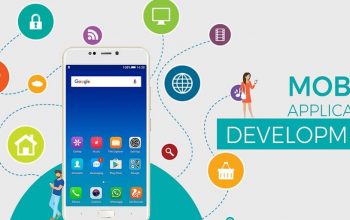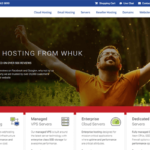Wondering how to create a home design app?
This is a competitive opportunity for anyone who can do it right.
In 2019, the interior design applications industry was estimated at USD 3,829 million, and is forecast to hit a size of USD 6,433, according to Globes News Wire. 9 million by the year 2025.’
AN INTRODUCTION about THE “DESIGN THIS HOME” APP
Design This Home is a “Augmented Reality” (AR)-based mobile game app that has been built by App Minis, the game studio. This game app falls within the category of simulation, and has the following features:
- Users may use this software to design and create virtual houses, and the software also helps them to decorate them.
- In this fun game, they can paint a wall, arrange furniture, renovate the board, etc.
- Users of the app can choose from a range of styles, such as modern, traditional, country, etc.
- Good quality retina art and animation are used in the app.
- Over Facebook or email, users can share their designs with their friends.
- The software provides payments through in-apps.
Project This Home has an interface for iOS and an interface for Android.
THE Demand FOR Related Applications
It had over a million downloads for Build This House. Apps like these are mobile AR apps, and analysts predict that the user base of mobile AR will exceed 3.5 billion by 2022. In “7 statistics any software creator should know about augmented reality” learn all about this.
Considering that AR has an increasingly increasing demand, this is not unexpected. As this Statista study predicts, the overall demand for AR will hit $198 billion.
How can you build a home design app close to home design?
The following measures are used in a software development project to create a home design app like Design The Home:
1. Accept on the extent of the project
Deal with partners in your company and describe the reach of the project as follows:
- Planning to have an interface for iOS and Android.
- Apps including AR emulation, Facebook sharing, Gmail sharing, in-app transactions, online transfers, and push alerts are offered.
- Develop the app for launching it in one geography.
2. Choose an effective model for “Software Creation Life Cycle” (SDLC)
I propose that you launch and sell a “Minimum Viable Product” (MVP) with the features listed above. Based on the feedback from the consumer, you should then refine the app.
This improvement would presumably arise in iterations. These ventures include the SDLC “Agile” model, and you can read “What is the life cycle of software production and what are you preparing for?” “An appreciation of why.
3. Formulate an approach to growth
A correct creation strategy will help you conduct this project successfully, thus, recognize the following as part of this approach:
- Utilize a “ Mobile Backend as a Service ” (MBaaS) model, so that you can concentrate on the growth, instead of having to handle the IT infrastructure.
- “Use” Software Development Kits “(SDKs) and” Application Programming Interfaces “(APIs) to incorporate core functions such as AR emulation, Facebook networking, etc.
- To simplify creation and research, utilizing “integrated development environments” (IDEs) and frameworks.
- Create and grow the app keeping in mind that you can deploy it in other geographies too, in the future. This needs that you obey rules for “app internationalization,” e.g. maintaining the code apart from the text. You will read more about it in “ The best guide to mobile app internationalization ”.
4. Create a Scrum team
To handle this agile project, use the “Scrum” technique since it is a tried-and – tested technique. The project manager ( PM) assumes a “scrum master” position and forms small, cross-functional “scrum teams” where developers and testers operate together. The team works on “ sprints ” , i.e., iterations according to the Scrum terminology.
This scrum team requires the following professional roles:
- Analysts for business;
- Designers of UI;
- Android developers, with the abilities of Kotlin;
- iOS developers, with experience in Swift;
Our guide “How to create a scrum development team?” if you need guidance on the scrum technique. “It might help.
5. MBaaS platform sign-up
Your priority as an entrepreneur is to rapidly deliver the app to the consumer, not IT infrastructure maintenance. I suggest that you use the MBaaS framework since it provides a range of benefits, such as:
- You don‘t need to hire a cloud platform architect, moreover, you don‘t need a mobile backend developer. Your valuable money do not need to be expended on maintaining the mobile backend.
- An MBaaS provider manages cloud infrastructure and persistent storage.
- Although mobile app creation may be complicated due to the multitude of mobile applications and devices, MBaaS applications cope with this difficulty.
- You can quickly add 3rd party APIs, and features such as authentication, account control, and push alerts are simpler to enforce.
- If you use an MBaaS platform, the team would find it simpler to scale up the software.
Read “Why do you pick the right Mobile Backend (MBaaS) as a service?” “Learn more about these opportunities. You can use AWS Amplify, i.e., AWS’s MBaaS offering, and take advantage of AWS’ excellent cloud capabilities.
6. Get an AR simulation API / SDK solution
AR simulation is the most important aspect in this app, and I suggest that you use Amazon Sumerian for this. Without AR / VR programming or 3D graphics experience, Sumerian helps you to easily build AR / VR games. To use Sumerian, you may consult the following resources:
- The overall Sumerian documents from Amazon;
- Reference to its scripting API;
- User guide for Amazon Sumerian;
- This is a repository of Sumerian learning tutorials, references, videos, and manuals.
Note that Sumerian is supported by AWS Amplify, and more about that can be read here.
7. Seeking a workaround for the API / SDK to enable users to post their designs on Facebook
Users of your software would like to post their creations on Facebook with their peers. To allow this, you need to use Facebook SDKs, and the following can help:
- Select the Android Facebook SDK here.
- “Getting the Android SDK started” is a helpful reference to this SDK.
- The Android SDK sources can be found here.
- The Facebook iOS SDK can be located here.
- Read “Facebook SDK for iOS Getting Underway.”
- The SDK guide for the Facebook iOS SDK is accessible here.
8. Get a Gmail integration solution
Users of the app would like to share their designs by email with their mates. For this, I suggest you use the Gmail API. With regard to this solution, notice the following fast facts:
- For your app, you can use the Gmail REST API.
- It is an easy-to-use API, and for more information, you should check out the API client libraries.
- For comprehensive learning tools for the Gmail API, check out this page.
- Your team will assist with this Gmail API tutorial.
- For the Gmail API, the API guide is available here.
9. Sign-up to introduce the in-app purchasing function on an API / SDK solution
An eCommerce API / SDK solution will make it easier for this app to implement the in-app purchase feature, so I suggest you sign up with Shopify. As follows, you should use its solution:
- Get links to the Shopify eCommerce API from the Developer Platform for Shopify.
- Shopify supports its API with outstanding tips, and you can use it here.
- You will also get support from the Shopify API tutorials from your developer team and you can find them here.
10. For the online payment function, find an API / SDK solution
The app requires an online payment feature, so I suggest that you use Braintree’s payment gateway solution. There are the following steps involved here:
- Sign-up for a solution named “Braintree Direct.”
- Braintree has detailed guidance for Braintree Direct, and you will find it here.
- When operating with Braintree Direct, programmers should consult this reference.
- Braintree already has API guides, and the team will find them here.
11. Get an API solution to incorporate push alerts in the app
You’d like to engage users of your app and help with push notifications. For a bulk SMS approach, it is simpler to incorporate the push notification function, so I suggest that you use Twilio. You ought to do the following:
- Sign-up for Twilio’s “Programmable SMS” solution.
- Find out this API ‘s documentation here.
- In “Messaging Systems and Copilot,” programmers may even get extra help.
Twilio updates its price options here.
12. Obtain the software resources needed
For this project, you need to install the following ‘Integrated Development Environments’ (IDEs):
- Android Studio, for the creation of Android apps;
- Xcode, for the creation of an iOS program.
In addition, to validate the software, you need a way to reach a wide range of mobile devices. I suggest that you use Experitest’s ‘Smart device & browser lab’ on the cloud.
Detailed test reports and analytics are also required by your testers, and commonly used open-source testing frameworks are not enough for this. You will support here with “SeeTest Reporter” from Experitest.
13. The UI design of the mobile app
You need to build a perfect UI for your UI design team that is easy-to-use, and elegant enough. For this mission, I suggest the following resources:
- For the UI architecture for iOS applications, Apple mandates “Human Interface Rules” and this should be adopted by the team.
- The UI design team needs to consult the guidelines for “Material design” for Android app UI design.
- You need to choose the right mobile navigation menu pattern for the UI. In this function, AR simulation is the key aspect, so you need to make sure that the users concentrate on this. The right choice is to use the “Hamburger menu” and you should read “Mobile navigation menu instances” to learn more about this.
- The UI of the smartphone app includes a fitting color scheme that fits the app’s characteristics. Our guide “ 8 patterns in mobile app color scheme ” will help you with this.
- Create the icons for the mobile app using the required best practices. For e.g., the style should be plain and restrained, and you should style icons that are easy to recognise and recall. “More guidance can be found in” How to design the perfect mobile app icon? ”.
14. Developing an interface for Android
I propose that you write the Android app using the new open-source language Kotlin. Because developers can use it to code quick and efficient apps, it is very popular for Android development.
The language has a succinct grammar, which increases programmers’ efficiency. Kotlin has powerful features that help developers prevent typical mistakes, such as the exception of null pointers. In Kotlin vs Java, I clarified the benefits of using Kotlin: which is the right choice? ”.
Developing the Android app involves the following steps:
- Using Android Studio to code the software. This popular IDE supports Kotlin, and “Get started with Kotlin on Android” provides guidance.
- Integrate Sumerian, Facebook, Gmail, Shopify, Braintree, and Twilio APIs / SDKs into your code.
- Use Espresso and Experitest’s mobile device lab on the cloud to test the app.
- You can now publish the app to Google Play, for which you can read this guide.
15. Code, analyze, and publish the iOS software
Coming to the iOS app growth, my advice is that you use Swift. This language is championed by Apple for designing applications for its platforms such as iOS, macOS, tvOS, etc. Swift has powerful features that help programmers to become more productive, and it also allows fast and efficient applications to be coded.
The vocabulary allows bug-free coding. It’s easy to read, making the software simpler to maintain. Read “ How to migrate the Objective-C project to Swift? “Learn more about these opportunities.
For iOS app development, take the following steps:
- Using Xcode to code the program.
- The next step is to integrate the SDKs / APIs for Sumerian, Facebook, Gmail, Shopify, Braintree, and Twilio in the code.
- You can use XCTest to test the app, along with the mobile device lab on the cloud from Experitest.
- To publish the software to the Apple App store, use these instructions.
16. Manage the project using a powerful PM tool
A scrum team operates as follows:
- A “Product owner ” presents the specifications in a paper named the “ Product Backlog”.
- In “sprint preparation sessions,” the team estimates the criteria, and schedules sprints.
- Daily stand-up meetings “enable the scrum master to gather and solve problems with the project status.”
- In a “sprint review meeting,” the team demonstrates the app, where the project stakeholders approve the sprint, provided that the app works.
- After the completion of a sprint, a ‘Sprint retrospective meeting’ helps the team to learn the lessons from the work they have just completed.
To control these tasks, you need a powerful PM method, and for this, I suggest Asana.
PLANNING TO Create A HOME Construction Software LIKE THIS HOME DESIGN?
Using the MBaaS platform, APIs / SDKs, IDEs, and frameworks, you will accelerate a software development project like this. Such ventures, however, appear to be difficult, and I suggest that you hire a trustworthy construction partner. “Our” How to choose the right organization for app creation “guide? will assist you in seeking such a trusted and professional spouse.
QUESTIONS Often Asked
How to build an app for home design?
You can build a home design app using “Augmented Reality” (AR), which involves the following steps:
- Identify the criteria, devise an approach to growth, schedule the project, and form a team.
- Use cloud platforms like AWS and AR creation engines like Amazon Sumerian, moreover, create APIs for key functionalities.
- Using the required stacking technologies to code the software. Examine and deploy it.
How can augmented reality ( AR) support users create applications for home design?
Augmented Reality ( AR) encourages consumers to literally explore new designs for home architecture. For this, they should use AR-powered mobile applications and explore numerous ideas for architecture. They may, for instance, rearrange pieces of furniture or digitally use AR-powered applications to position decorative pieces.
How long would it take for an AR home design software to develop?
Depending on the functionality you choose to add in the software, the time taken to create an AR home design software. It will take a person-month to develop basic AR home design apps, while you will need 9 people-months to construct a feature-rich app.








